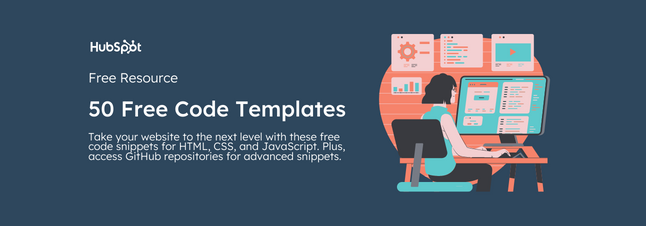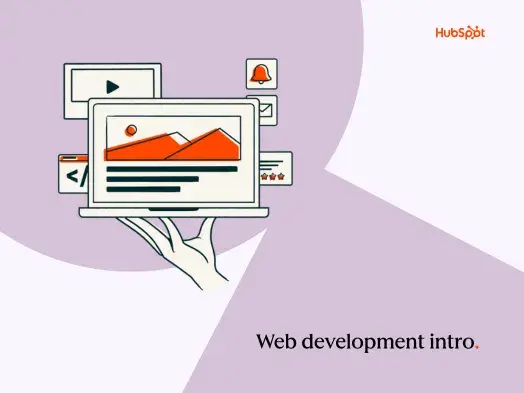To help you prepare for your next backend interview, we've compiled a list of 37 questions and answers. We'll start with general questions and move on to more specific questions about frameworks, scalability, and security so you can feel confident going into your interview.
Table of Contents
- What is a Backend Developer?
- 37 Backend Interview Questions and Answers
- Add Value to Your Next Interview
What is a Backend Developer?
Backend developers are responsible for the server side of web applications. They work closely with front-end developers to ensure that data gets appropriately transmitted between the client and server. To be successful in this role, backend developers must have a strong understanding of server-side technologies, databases, and caching.
The most common backend programming languages are Java, Python, and PHP. However, many other languages, such as Ruby and Node.js, are also used for backend development.
When interviewing a backend developer, you want to ensure they have a strong understanding of server-side technologies and can effectively communicate with front-end developers. You also want to ask about their experience with various programming languages and databases.
Here are 25 questions to ask a backend developer in an interview:
Let's get started with some general backend questions and answers.
37 Backend Interview Questions and Answers
General Questions
1. Explain the purpose of the backend?
The backend, also known as the server-side, is the software that powers a website or app. It's responsible for storing and organizing data, handling user requests, and delivering content to the front end.
2. What is a typical workflow for implementing a new feature on the backend?
Workflows for implementing features on the backend can vary depending on the company and the technology stack. However, a typical workflow would involve discussing the feature with the stakeholders, designing and prototyping the feature, writing the code, and doing Quality Assurance (QA) testing. In most cases, the backend developer will work with the front-end developer to ensure that data is correctly transmitted between the client and server. It's also essential to ensure that any new features are backward compatible with previous versions of the application.
3. Explain the essence of DRY and DIE principles?
The DRY (Don't Repeat Yourself) principle is a software development principle that states that developers should not duplicate code. Duplicated code can lead to maintenance issues because changes need to be made in multiple places. The DIE (Duplication Is Evil) principle is similar to the DRY principle. Still, it takes it one step further by stating that even slight amounts of duplication are inadequate and should be avoided.
4. What is a web server?
A web server is a computer that stores and delivers web pages. When you type a URL into your browser, the browser contacts the web server and requests the page. The web server then sends the page back to the browser, which displays it on your screen. Apache and NGINX are some of the most popular web servers used by backend applications.
Web servers can also host other resources, like images or videos.
5. What is the difference between a GET and a POST request?
A GET request retrieves data from a server, whereas a POST sends data to a server. With a GET request, parameters get passed in the URL. With a POST request, parameters get passed in the request's body.
6. What is an example of when you would use caching?
Caching is often used to improve the performance of an application. For example, frequently accessed information from a database may be cached to avoid unnecessary queries.
7. How would you select a cache strategy (e.g., LRU, FIFO)?
Selecting a cache strategy depends on the application's specific needs. For example, LRU (Least Recently Used) is a good choice for applications where frequently accessed data is also likely to be reaccessed. FIFO (First In, First Out) is a good choice for an application where data expires after a particular time.
8. What are some common issues with ORMs?
Some common issues with ORMs include performance degradation, incorrect data mapping, and difficulty handling complex queries.
9. When should you use asynchronous programming?
Asynchronous programming is often used when there is a need to improve the performance of an application. For example, if an application needs to make many database queries, it may be beneficial to use asynchronous programming to avoid blocking the main thread.
10. What is the difference between promises and callbacks?
A promise is an object that represents the result of an asynchronous operation. A callback is a function that is invoked when an asynchronous operation completes.
11. What is a closure?
A closure is a function that accesses variables “outside” itself, in another function’s scope, even after the parent function has closed.
12. What is the difference between a Class and an Interface in Java?
A class is a blueprint for an object, whereas an interface is a contract that defines the methods that a class must implement.
13. What is continuous integration?
Continuous Integration (CI) is a software development practice in which developers regularly merge their code changes into a shared repository. CI helps to ensure the codebase is always stable and there are no conflicts between different branches of code.
14. What is a software development kit (SDK)?
SDK is a set of tools that helps developers build software applications. It typically includes a compiler, debugger, and other utilities. Some common SDKs used for backend development include the Java Development Kit (JDK) and the Python Software Development Kit (SDK).
15. What are the tradeoffs of client-side rendering vs. server-side rendering?
There are a few tradeoffs when deciding between client-side rendering and server-side rendering.
Client-side rendering can be more complex to set up because the application needs to be able to run in a browser. Meaning the code must be transpiled from a higher-level language (such as JavaScript) to a lower-level language (such as HTML). In addition, client-side rendering can be slower because the application needs to download all of the necessary resources before it can start rendering.
On the other hand, server-side rendering is typically easier to set up because developers can use any language capable of generating HTML. In addition, server-side rendering can be faster because the HTML can be generated on the server and then sent to the client.
Please note that these tradeoffs often depend on the site's complexity and function.
16. What are high-order functions? Why are they useful?
High-order functions are functions that take other functions as arguments. These functions help abstract common patterns of code. For example, a high-order function could create a function that logs the arguments it is called with. This would be useful for debugging purposes.
17. What is a microservice?
A microservice is a small, independent component of a more extensive application. Each microservice has its own functionality and can be deployed independently.
Microservices often build into large, complex applications that are easy to maintain and scale. One of the benefits of using microservices is that they can be written in different programming languages and deployed on different servers.
Common examples of microservices include user authentication, payment processing, and image manipulation.
API Questions
18. How would you design an API?
When designing an API, it's helpful to consider the needs of the developers who use the API. The API should be easy to use and well-documented. It's also critical to consider the API's security and ensure that only authorized users can access the data. Additionally, the API should be able to handle a large number of requests without overloading the server.
19. What is the difference between a RESTful and a SOAP API?
RESTful APIs are designed to be easy to use and well-documented. They use a standard set of rules, which makes them easy to learn and use. On the other hand, SOAP APIs are designed to be more secure and can handle a larger number of requests. However, they are more complex to learn and use.
20. How do you handle errors when making API calls?
When making API calls, it's industry standard to handle errors in a way consistent with the rest of the application. For example, if the API returns a 404 error, you might want to display a message to the user saying the data could not be found.
Database Questions
21. What is a database?
A database is a place where information is stored. Backend applications use databases to store and retrieve data, like user information or app data. There are many different databases, but the most common ones backend applications use are relational databases like MySQL, PostgreSQL, and Oracle. Databases are usually managed by a database management system (DBMS), which provides an interface for administrators to manage the data. Some backend applications also use NoSQL databases, which are non-relational and often more scalable than relational databases.
22. How would you handle optimizing an existing database?
Once you've selected a database, it's vital to keep it optimized. This process can be done by periodically running maintenance tasks, such as indexing the data or purging old data that is no longer needed. Additionally, monitoring the database's performance and ensuring it can handle the application's load is crucial.
23. What is the difference between a relational and a non-relational database?
Relational databases store data in tables and use primary keys to identify each row. Non-relational databases, on the other hand, store data in documents and use object IDs to identify each record.
24. How would you query data from a MongoDB database?
MongoDB uses a query language called MongoDB Query Language (MQL). You would use the find() method to query data from a MongoDB database. This method takes a set of parameters that specify the criteria for the query. For example, to find all documents in the "users" collection that have a "firstName" of "John," you would use the following query:
db.users.find({"firstName": "John"})
25. What are some benefits of using a NoSQL database?
NoSQL databases have a few advantages over relational databases. They are generally more scalable and easier to manage. Additionally, they can be more flexible because they do not require a schema. However, NoSQL databases can be more difficult to query, and they often do not provide the same level of data consistency as relational databases.
26. How would you normalize data in a relational database?
To normalize data in a relational database, you would create separate tables for each entity type and use foreign keys to relate the data. For example, if you had a "users" table and an "orders" table, you would use a foreign key to link the data in the two tables.
Scalability Questions
27. How would you design a software system for scalability?
When designing a software system for scalability, it's essential to consider the application's needs. For example, if the application needs to handle many concurrent users, you might want to design the system using a microservices architecture. This architecture allows each component of the system to be scaled independently. Additionally, you might want to use a message queue to decouple the components of the system. This will allow each component to scale independently without affecting the performance of the other components.
27. What are some common scalability issues? How can they be addressed?
Some common scalability issues include performance degradation, data loss, and downtime. You can address these issues using various techniques, such as caching, sharding, and replication. Additionally, it is crucial to have a well-designed architecture that can handle increased loads.
Scalability is an essential consideration for any application. While a few common scalability issues can occur, you can solve them with proper infrastructure. By understanding these issues and how to solve them, you can ensure that your application will be able to scale as needed.
28. Scale-out vs. scale-up: how are they different? When to apply one, when the other?
Scale out and scale up are two different approaches to increasing the capacity or performance of a system. Scale-out involves adding additional components to the system, while scale-up involves making existing features more powerful.
Scale-out is usually the preferred approach when dealing with web applications or other systems that are highly parallelizable since it allows for near-linear increases in capacity. Scale-up may be more appropriate when working with legacy systems or those that are not efficiently parallelizable.
Security Questions
29. What are some common security risks when building a web application?
Some common security risks when building a web application include SQL injection, cross-site scripting (XSS), and cross-site request forgery (CSRF).
SQL injection is a type of attack where malicious code is injected into an SQL statement, resulting in the execution of unintended actions. XSS attacks occur when malicious code is injected into a web page, resulting in the execution of unintentional actions. CSRF attacks happen when a malicious user tricks a victim into submitting a request that performs an unwanted activity, such as changing their password or transferring funds.
30. How would you implement authentication and authorization on a new project?
There are many ways to implement authentication and authorization on a new project. One way would be to use an existing third-party service, such as Auth0 or Okta. Another way would be to roll out your solution using JSON Web Tokens (JWTs) or similar technology.
Regardless, you need to create a login page where users can enter their credentials. Once the user's credentials were verified, you would generate a JWT and send it back to the user. The user would then need to send the JWT with each authentication request.
You would also need to implement an authorization system to check if the user has the correct permissions to access a particular resource. One way to do this would be to create roles and assign users to those roles. Then, you would use that to check the user's permissions when handling each request.
31. What is the difference between a cookie and a session?
A cookie is a small piece of data stored on the user's browser. A session is a server-side data structure that holds information about the user's current session.
Cookies store information such as the user's ID, language preference, or any other preferences. Sessions store information from a series of requests, such as the user's shopping cart or other information that needs to persist across multiple requests.
Testing Questions
32. How would you unit test a new feature?
When testing a new feature, you would first need to write a test covering the new feature's functionality. You should isolate these tests from any other code in the system. Once you write the test, you need to run it and verify that it passes.
If the test fails, you need to debug the code and find the cause of the failure. Once you find the cause, you need to fix the code and re-run the test. If the test passes, you can then commit the code and move on to testing other features.
33. How would you integrate tests into your workflow?
When integrating tests into your workflow, you need to create a testing environment that mirrors the production environment as closely as possible. You need to set up this environment with all the necessary dependencies and data.
Once you have set up the testing environment, you need to write tests covering the system's functionality. These tests should be run automatically whenever new code gets pushed to the repository. If any of the tests fail, the build should be marked as failed, and the developers notified.
You should also manually run tests before each release. This will ensure that all of the functionality is working as expected and that there are no regressions.
34. What are some performance testing steps?
1. Identify the critical areas of the application that need testing.
2. Create test cases that exercise those areas of the application.
3. Run the test cases and collect data on the application's performance.
4. Analyze the data and identify any areas of improvement.
35. Why are TDD tests written before code?
TDD (Test-Driven Development) is a development methodology in which you write before code. The idea behind TDD is that by writing tests first, developers can ensure that their code meets the requirements. In addition, TDD can help to find bugs early and prevent them from being introduced into the code. However, TDD can be time-consuming and requires a good understanding of testing principles.
Deployment Questions
36. How would you deploy a new version of an application?
There are many ways to deploy a new version of an application. One way would be to use a tool like Ansible or Chef to automate the process. Another way would be to run the necessary scripts on each server manually.
If you use a tool like Ansible or Chef, you need to update the configuration files and run the tool. This process deploys the new code to all of the servers in the environment.
If you deploy the code manually, you must log in to each server and run the necessary scripts. Doing this updates the code on each server individually.
Once the new code gets deployed, you need to run your tests to ensure everything is working as expected. If there are any issues, you must roll back the changes and fix the problem, then redeploy the code.
37. How would you roll back a failed deployment?
If a deployment fails, you must roll back the changes and fix the problem. Once the problem is fixed, you can then redeploy the code.
To roll back a failed deployment, you need to undo any changes made during the deployment. This process could include reverting code changes, restarting services, or rolling back database changes. Once the changes are back, you can redeploy the code.
Add Value to Your Next Interview
These are great questions to start if you are preparing to host a backend interview. As the interviewee, study this guide and keep in mind that being able to solve problems and code properly is essential for the role. To be fully prepared, study algorithms, data structures, and software design principles. With a little extra effort, you'll be well on your way to acing the backend interview.
Website Development


.png)




![How to make a website with user accounts and profiles [with WordPress, Wix, and more]](https://53.fs1.hubspotusercontent-na1.net/hubfs/53/%5BUse%20(3).webp)
![How to build a Google Site that looks good and drives business [templates & examples]](https://53.fs1.hubspotusercontent-na1.net/hubfs/53/Website%20Redesign%20Terms.png)





